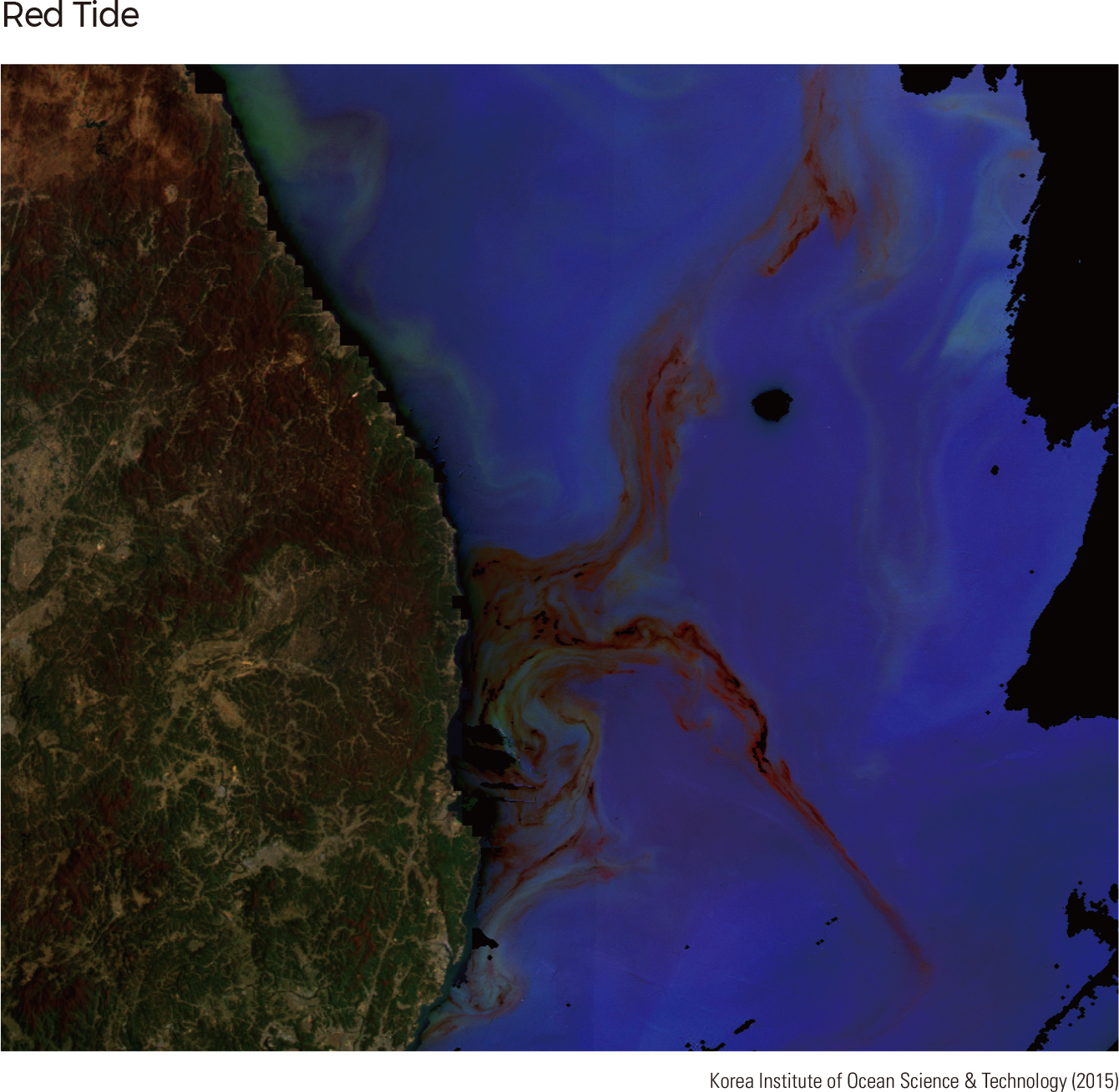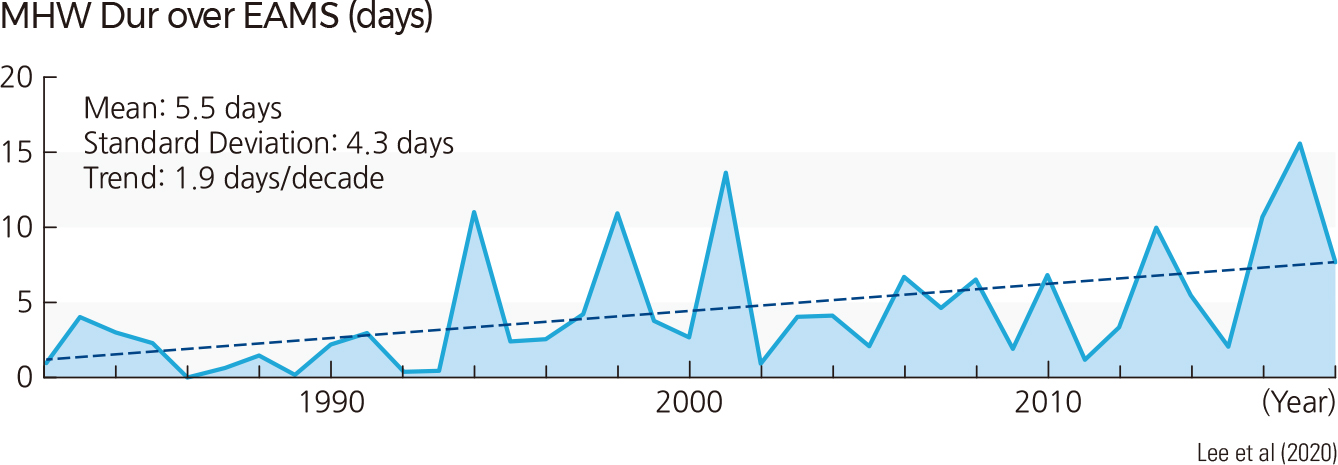Comprehensive Edition 2022
Korea maintains a network of coastal and marine science bases for monitoring the properties of the marine environment, including water temperature, salinity, tide levels, and wave heights. Such data is essential for protecting and conserving marine environments, such as seagrass beds. Seagrass is important for nurturing coastal fisheries by providing food, habitat, and spawning grounds for many marine organisms. Sometimes referred to as blue carbon, seagrass stores a large amount of carbon dioxide. The loss of seagrass habitat due to coastal development from industrialization, land reclamation, and dredging has led to its being designated as a protected marine organism.
Aerial and satellite imagery can be used to monitor other ocean phenomena. Red tide refers to a red coloration of seawater due to a mass bloom of phytoplankton — mainly cyanobacteria, diatoms, and dinoflagellates. Red tides can damage marine ecosystems by causing mass kills of coastal fish species. Green tides and brown tides, colored by a mass proliferation of seaweed, both originate from the east coast of China and can float across the Yellow Sea and the East China Sea to the coast of Korea. Although they are non-toxic, large amounts of green algae and brown algae introduced to the coast cause ecological disturbance and industrial damage.
Suspended sediments in ocean water are also important as sources of both nutrients and contaminants in the marine habitat. Suspended sediment in the ocean generally has two sources: one is sediment runoff from land carried through rivers to the ocean; the other is suspended sediments pulled up from the ocean bottom due to waves or currents. As the greater portion of sediment comes from runoff, coastal areas of the Yellow Sea have an abundance of suspended sediments. The concentration of suspended sediments is mostly influenced by waves and wind and is generally highest during the winter.
The greatest seasonal variation in ocean properties around Korea can be found in the temperature of seawater. Closely related to atmospheric temperature, sea surface temperature averages 5˚C in the winter and 20˚C in the summer. In recent years, high ocean water temperatures have caused damage to marine ecosystems and fisheries. Summer maximum water temperatures are especially critical to monitor and have been increasing markedly in recent years.
Monitoring stations along the coast indicate that the sea level is rising at a rate of up to about half-a-centimeter per year. Such a rise in sea level can exacerbate problems such as coastal erosion and saltwater intrusion into freshwater aquifers and can increase the likelihood of land inundation from storm surges associated with typhoons. |










